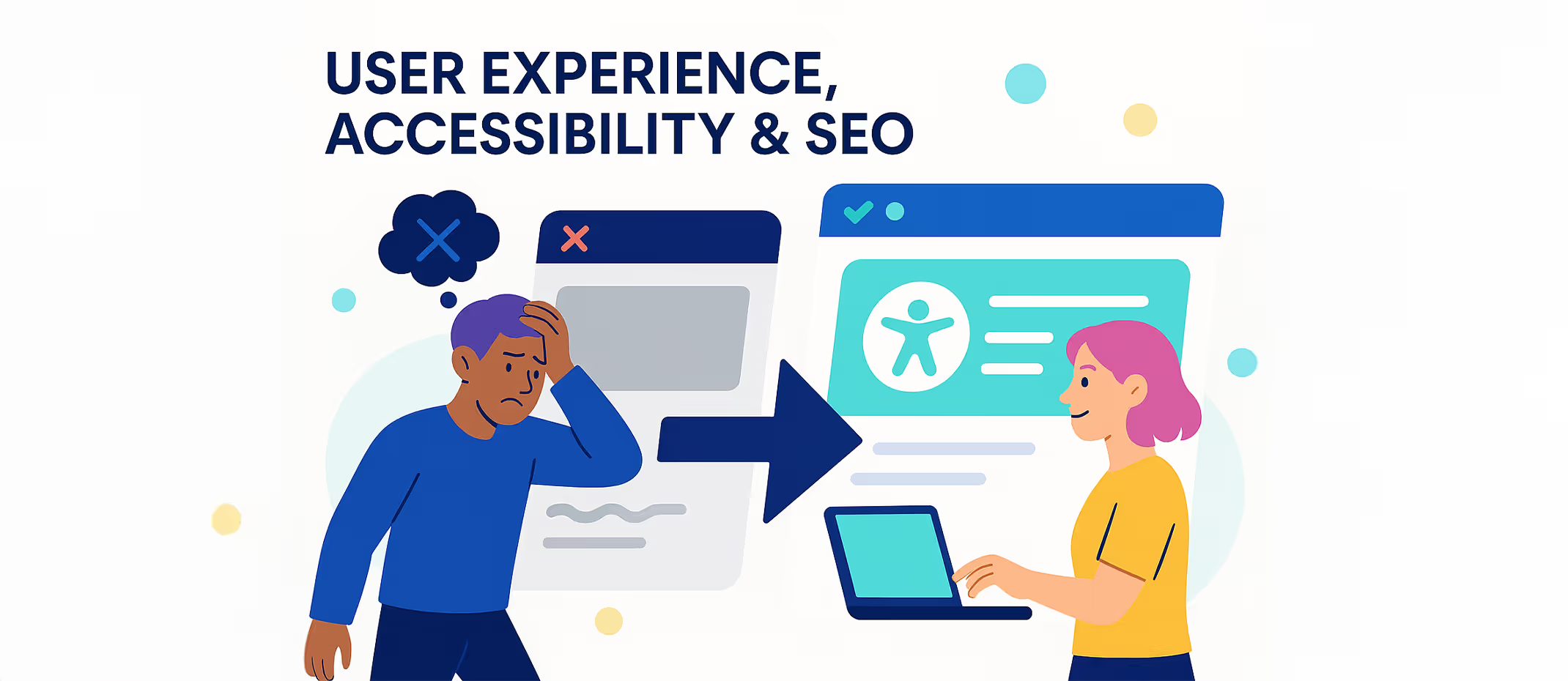What Is Web Accessibility?
Website accessibility is the practice of designing digital content and functionality to be usable by all people — including those with disabilities. This includes people who are blind, have motor impairments, cognitive challenges, or rely on assistive technologies like screen readers and keyboard navigation.
But accessibility is not just a legal or ethical responsibility — it’s a conversion and SEO strategy. When your site isn’t accessible, you’re not only excluding part of your audience — you’re likely losing traffic, rankings, and revenue.
How Accessibility Affects User Experience
1. Lost Customers from Frustrating Interfaces
If a user can’t navigate your site — especially on mobile or using assistive tech — they’ll leave. A study by WebAIM found that 96.3% of homepages have accessibility issues. That’s a huge missed opportunity for engagement.
Broken forms, missing alt text, small fonts, or poor color contrast = lost leads.
2. Higher Bounce Rate Hurts SEO
Google measures how users engage with your page. If visitors leave quickly due to usability problems, your bounce rate increases — signaling to Google that your page doesn’t satisfy the searcher’s intent, which lowers your rankings.
🧠 Tip: Use Google Analytics and Google Search Console to track bounce and engagement metrics.
3. Core Web Vitals and Page Experience Signals
Google’s ranking algorithm includes Core Web Vitals — a set of user experience metrics like load time, interactivity, and visual stability. These vitals are often better on accessible websites because they focus on clean structure and simplicity — a win-win for UX and SEO.
4. Voice Search and Accessibility Go Hand-in-Hand
Many accessibility practices — such as clear headings, proper semantic structure, and descriptive alt text — also improve your visibility in voice search results. As more users rely on voice assistants like Siri and Google Assistant, structured, accessible content ranks higher.
How Accessibility Helps You Win More Customers
- ✅ More users can access your content, especially on mobile and assistive devices.
- ✅ Inclusive design builds brand loyalty with a wider audience.
- ✅ Positive user signals improve trust with both users and Google.
- ✅ Lower legal risk under laws like the ADA or EU Web Accessibility Directive.
Final Thoughts
If your website isn’t accessible, it’s costing you traffic, customers, and revenue. Accessibility is no longer optional — it’s an essential part of good SEO and digital growth.
👉INKLU helps you build fully accessible digital communities from the start. Whether you're hosting events, creating content, or running a community — our platform ensures your audience can fully engage, without barriers.
Ready to Make Your Website More Inclusive and Profitable?
Join INKLU today and turn accessibility into your competitive advantage.
